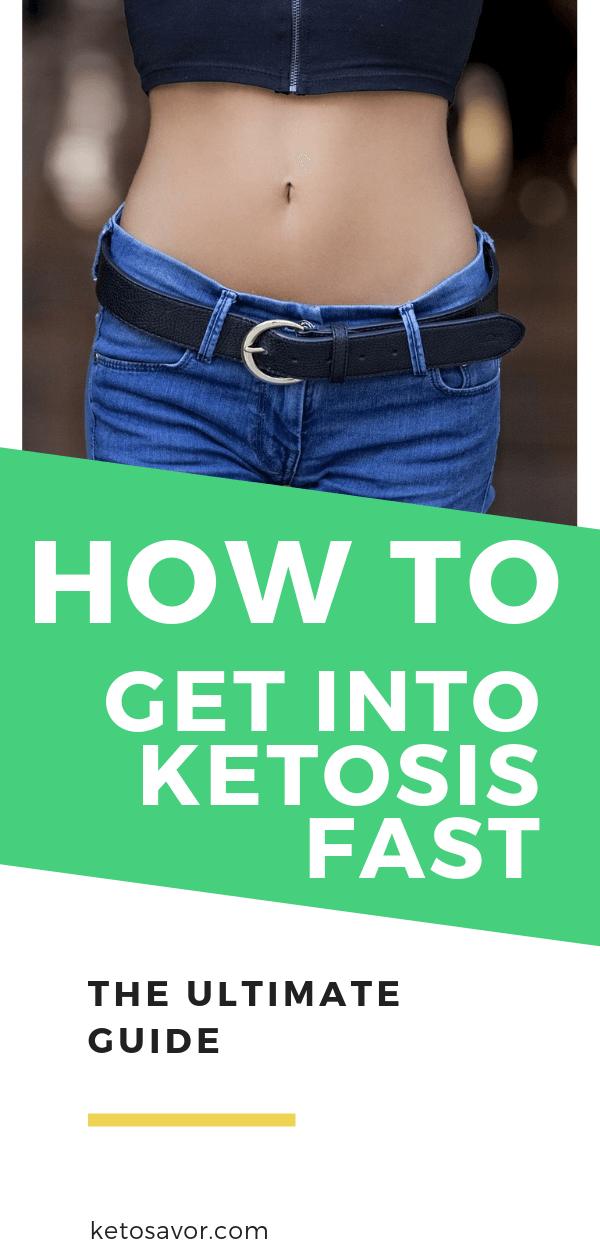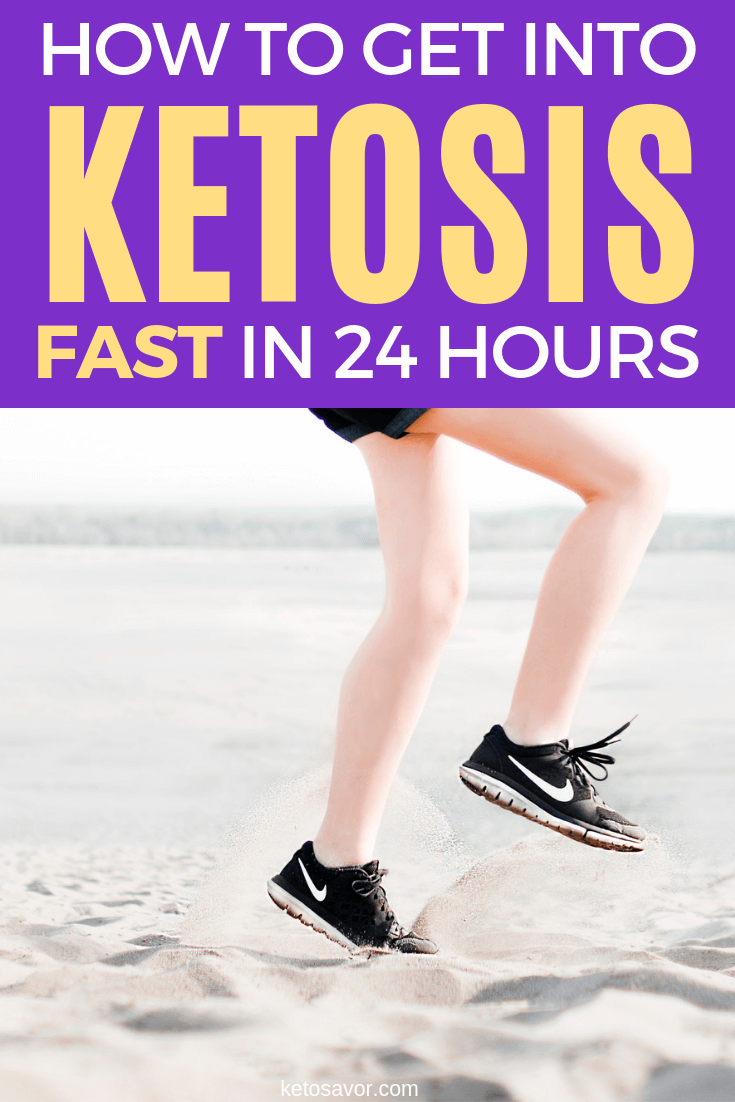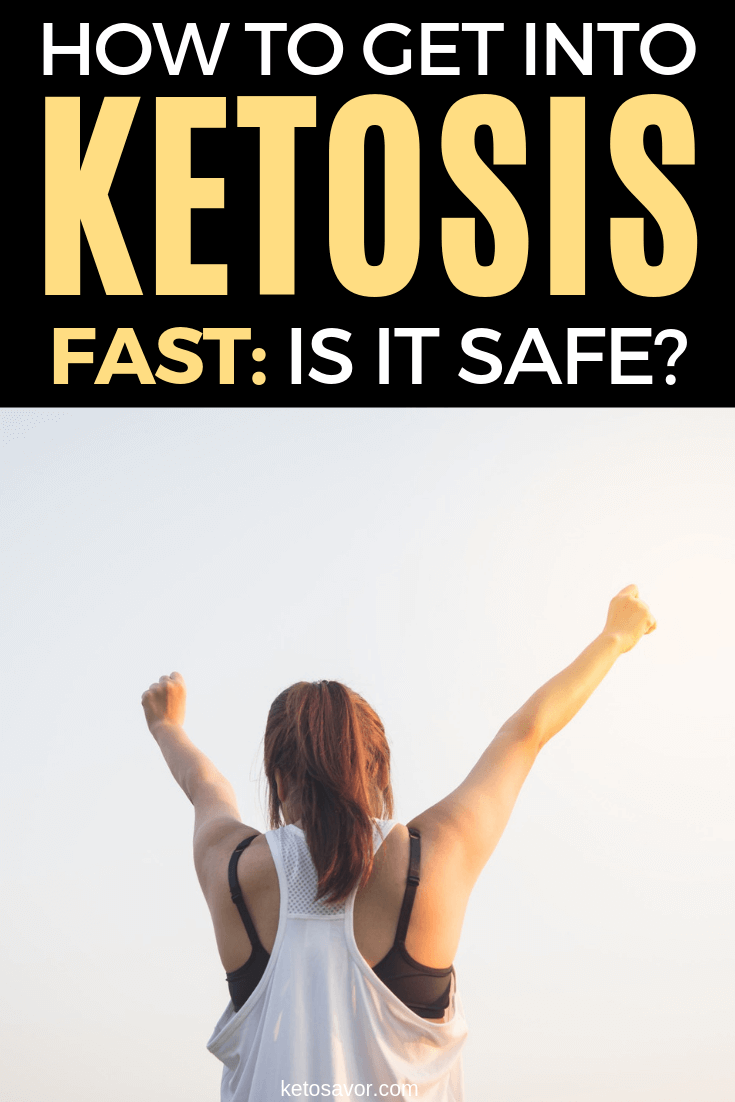The keto diet is gaining traction among the general population due to how effective it is in terms of weight loss. Once you achieve ketosis, you’re on your way. Here, we’ll teach you how to get into ketosis fast in 24 hours and to understand the keto diet better. Check out our complete guide below!
Table of Contents
Why is My Body Not Going Into Ketosis?
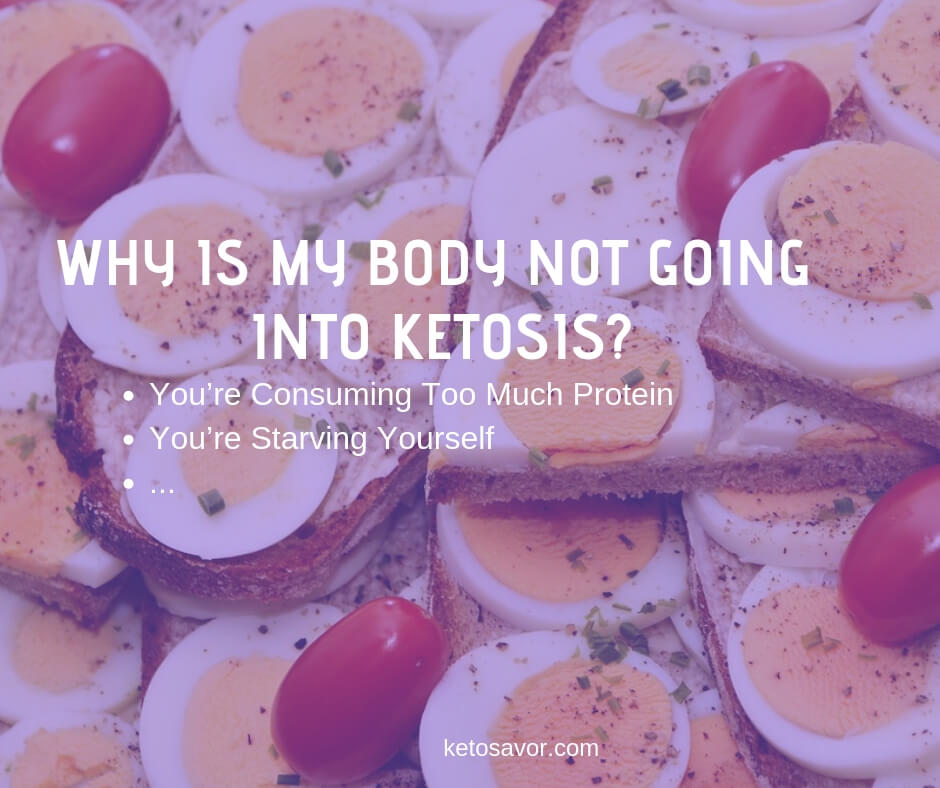
In order to go through the keto diet, you must first get into ketosis. Unfortunately, not everyone succeeds in doing so. Why is this so? Here are the reasons why.
1) You’re Consuming Too Much Protein
To be fair, a keto diet is associated with eating a lot of meat. But while it’s a high-fat diet, it doesn’t require the same uptick in your protein intake — the truth is that you only need a moderate amount. In particular, only around a quarter of your daily calorie intake should be from protein.
If you have an excess amount of protein and you’re restricting your carb intake, you could develop gluconeogenesis. This is when your body starts to produce glucose from non-glucose sources. What’s one good source? Protein, which is made up of hundreds of amino acids.
The process of gluconeogenesis typically occurs in the liver. You might think that it’s good that your proteins are serving as your new source of energy — with the molecules moving throughout your body through the bloodstream. But the problem is that your body should be burning fat first, not protein.
While you should still consume protein, you must be careful with the amount. You need it to keep your muscles in good shape, but you also don’t want to experience gluconeogenesis.
2) You’re Starving Yourself
Many people think that being on a diet means having to eat less food. But those are only the extremely low-calorie diets intent on keeping you hungry. In contrast, the keto diet cares less about the calories and more about the carb and fat content. Plus, foods with fat and protein will keep you feeling full longer.
You won’t attain ketosis if you starve yourself. Your body will slow down to protect its essential functions from stopping. Plus, depriving yourself of food can backfire in the long run. What you should do is to stick to a healthy calorie count based on your weight and to eat healthy fatty foods.
3) You’re Eating More Than You Should
In contrast to the previous factor, you might be consuming more foods than your body needs. It’s true that the keto diet focuses more on reducing your carb intake than your calories, you still shouldn’t be eating however and whenever you want.
A single gram of fat has more calories than a single gram of carbohydrates or protein. This means you cannot eat the same amount of food as you did before. You can still eat three meals a day, but you’re going to get most of your calories with fewer portions — with up to 80 percent coming from fat alone.
Consequently, you should never stop counting both your nutrient and calorie intake; you have to adjust your daily calorie intake whether you gain or lose weight. Failing to reduce your daily calorie intake after losing weight could lead to dismal and inconsistent weight loss results.
4) You Underestimate Your Carb Intake
The keto diet is a low-carb and high-fat diet. But what’s difficult for some people is how to properly keep track of their macronutrient intake. While you might think you’re successfully avoiding carbs, failing to get into a state of ketosis may indicate otherwise.
Why is this so? For one, carbs are still in foods that are ideal for people who want to get into ketosis. Foods such as milk and nuts still have a decent amount of carbs. You’re still getting some carbs even if you drink the full-fat variant of milk products. As always, the key is to carefully choose the food you eat.
5) You Have Food Intolerance Or Leptin Resistance
There are certain health conditions that can stop your body from getting into ketosis. For one, there’s the food intolerance. This is similar to a food allergy in that it’s a reaction to a particular food or beverage. So if you’re lactose intolerant, you can’t take full advantage of high-fat and protein-filled dairy products.
Another issue is leptin resistance. If you have this, your brain won’t notice all the leptins produced by the fats you have. This leads to you thinking that you’re still hungry and in need of more sources of energy — even if you’ve just eaten a full meal. Worse, it makes your body burn calories at a slower rate.
How to Get Into Ketosis Fast in 24 Hours
Now that you know why you might not get into ketosis, here’s how you can achieve this state in just a day. It’s certainly possible to be in ketosis in 24 hours. However, your carb intake must be significantly reduced even lower than the 20g net carbs recommended in the usual keto diet plan.
1) Avoid Snacking
Your goal is to provide the least amount of glucose to your body. Glucose comes from carbohydrates, so look for foods that either don’t have any carbs or have a negligible amount. Focus on those that are high in fat with a moderate amount of protein. Drink a lot of water if you’re feeling to urge to eat.
If water isn’t enough to keep you from getting hungry, get a keto-friendly snack option. Limit it to a single serving — you shouldn’t be having a snack in the first place. Find a keto fat bomb with the least amount of net carbs; even one cheese stick should satisfy your cravings.
2) Pick An Optimal Day
If you want to get into ketosis in 24 hours, you need to pick the right day of the week. This could either mean picking the weekday or the weekend. Ultimately, it’s up to which day will make you less likely to act on your cravings.
At work, you might get envious of your workmates eating whatever snack they want. This is worse if your department decides to have a pizza party, for example. On the other hand, you might succeed in your road to ketosis if you just focus on work all day.
For most people, it would make sense for them to start on a weekend instead. Why? Well, you can do whatever you want on a Saturday or Sunday. You can lock yourself in the room and watch TV instead of eating out with your friends. Being busy or distracted stops you from thinking about eating all the time.
3) Maintain a Good Amount of Electrolytes and Drink Lots of Water
Once you begin the keto diet, you lose water and electrolytes at a faster rate. Electrolytes such as calcium, phosphate, magnesium, sodium, and potassium are important for your body. They keep you hydrated while helping your muscles and nervous system function properly.
So without enough electrolytes, your body won’t transition well into ketosis. You may also experience a variety of symptoms like dizziness, fatigue, cramps, and problems in concentrating. Don’t think that salt is bad because of the sodium — you need the sodium if you want to get into ketosis.
Moreover, you need water to help your kidneys work. The liver can do some of the things your kidneys do, but it cannot utilize fatty acids as efficiently as possible. Thus, you cannot afford to become dehydrated if you want to have ketosis in 24 hours.
How much water should you drink on a keto diet? First, identify your weight. Divide this by half. The result — in ounces — is how much water you need on a daily basis. A 150-pound individual should have a minimum of 75 ounces of water.
4) Work Out
The easiest way to get rid of the carbs and glucose in your body is to work out. Go to the gym and do some physically intensive activities. If working out is not your thing, you can play any sport you like. What matters is that you get sweaty and force your body to burn carbs for energy.
You need to deplete your muscle glycogens, which are different from those in your liver. As you workout, you lose more of these until your muscle has to look for glucose in the bloodstream. This causes your blood sugar level to fall — alerting your liver that it has to convert more glycogens into glucose.
But since you’re in a keto diet, your liver will also run out of glycogens to use. This is because you’re not eating high-carb foods anymore. This will then force your body to look for a new source of energy: your stored fat. In other words, you enter a state of ketosis to support your muscles while you work out.
5) Consume MCT Oil
Have you heard about medium chain triglycerides? Otherwise known as MCTs, these are fatty acids like the long-chain and short-chain variants. You can actually buy it in oil or supplement form, but this fatty acid is also a natural component of coconut oil, cheese, milk, and butter.
Having MCT in your body is important because they don’t spend a long time in your stomach for digestive purposes. Instead, MCTs skip that organ and proceed to the liver. Here, the fatty acids are converted into ketones before being sent to the bloodstream.
Note that ketosis is all about burning fat for energy. If you maintain an extremely low-carb and high-fat diet on your first day and supplement it with MCT oil, you get more ketones. This means you can achieve ketosis faster — and it helps that MCT oil is a good option to have before you work out.
6) Don’t Eat Three Meals in A Day
The final suggestion we have is for you to skip two meals before having a keto-friendly meal at the end of the day. Why? Because this guarantees that your body won’t have new sources of carbs and glucose. This makes your body use up the glycogen it has stored to keep you energized throughout the day.
And when the glycogen runs out, your liver starts to rely on your stored fat — turning them into ketones. Just drink water and wait until you can finally eat. At the end of the day, have a meal that is entirely free of carbs. This combination of fasting and a keto meal will surely get you into ketosis fast.
How Do I Know if I’m in Ketosis?
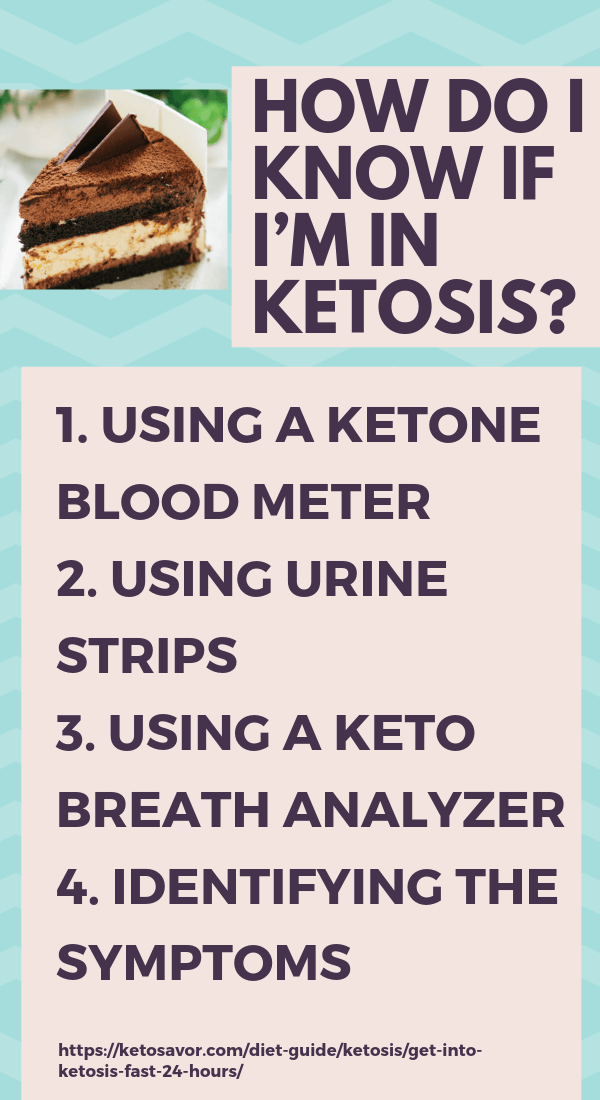
There are many ways to know if you’re already in ketosis. You can use different instruments to check your ketone level or look for the symptoms associated with the process.
1) Using a Ketone Blood Meter
Arguably the best and most accurate way to check if you’re in ketosis or not is through blood testing. It works by looking at the beta-hydroxybutyrate (BHB) ketone in your blood. There are other types of ketones such as acetoacetate and acetone, but BHB is the most prominent one in your body.
To conduct a ketone blood test, you need to have the indicator strips and the device. Thus, it’s not exactly the cheapest option. Likewise, not everyone would be okay with having to prick a finger every time they need to check their ketosis level.
2) Using Urine Strips
If you’re looking to check your ketosis level in a more affordable way, this is for you. While it does not provide results as accurate as blood meters, a urine strip would be easier to find in your area. What’s important is that you use this early on — your body will eventually excrete fewer ketones through urine.
3) Using a Keto Breath Analyzer
The last way to measure your ketone level is by observing your breath. You only have to get the analyze once. After that, you can use it as many times as you want. Unlike the blood ketone meter, this looks at the acetone rather than the BHB. Thus, the accuracy is only good for detecting low blood ketone levels.
4) Identifying the Symptoms
If you don’t want to do any testing, you can look for the symptoms associated with ketosis. Note that not all symptoms are good for you. For example, a telltale indicator that you’re entering a state of ketosis is if your breath starts to smell bad and you have trouble sleeping at night.
Other symptoms include constipation and diarrhea. You may even have problems focusing at work or staying energized for the day. Luckily for you, these symptoms are temporary. They appear at the start of your keto diet — when you’re just shifting to a new low-carb diet.
Then again, there are desirable symptoms. In the long run, you might feel less fatigued and more energized. And when you’re in ketosis, you feel full longer than usual — preventing you from overeating. Moreover, weight loss is arguably the symptom you want the most.
How Much Weight Can I Lose During Ketosis?
We cannot give exact numbers simply because each individual is distinct. The weight you lose depends on several factors. First, your body composition matters a lot. If you’re overweight, you could lose a lot of weight pretty quickly early on. Your metabolism rate affects your weight loss success as well.
In addition, your lifestyle is important. If you want to maximize the potential of the keto diet, you have to exercise on a daily basis. You need to look for fatty foods that are still healthy for you — not just junk foods. If you’re serious about losing weight, you must be disciplined.
However, we can give you a general range. During your first week of ketosis, you could lose between two to 10 pounds. Why? It’s because you lose water weight as you lose glycogens; it’s not necessarily due to your body burning all the fatty acids.
After about two or three weeks, you should expect to lose weight at a slower rate. After all, your body is no longer losing weight due to water; it’s now focusing on fat. Losing one to two pounds on a weekly basis is average.
In the long run, your weight loss rate slows down. This is due to the fact that your daily calorie intake is no longer as much as before. Even if you eat fewer foods, it won’t significantly improve your weight loss. Even if you don’t lose weight for several weeks, that doesn’t mean you should stop. Stay consistent.
Get Into Ketosis: Is It Safe?
Being in ketosis isn’t bad as long as you’re well-informed about the process and the keto diet. In fact, ketosis is noted for its beneficial effects on people who are suffering from epilepsy or type 2 diabetes. It could also help obese individuals get back in better shape.
In other words, ketosis is a typically safe process. It’s a natural function of the body when you’re running out of glucose to burn. There are the aforementioned symptoms, but these aren’t permanent issues. Your body will eventually become better adapted to ketosis.
Just continue to eat healthy foods. Go for meals that are low in net carbs but have a decent amount of fiber to help digestion. And lastly, be aware of your ketone and blood sugar levels. If they’re both at high levels and you’re feeling unwell, seek medical assistance immediately; you might have ketoacidosis.
Should I Try To Get Into Ketosis This Fast
Is it alright for you to speed up your journey into keto ketosis? Yes, but there are exceptions. If you have any health conditions that do not go well with a low-carb and ketone-filled diet, you should probably think twice about it — especially if the immediate symptoms are going to affect you a lot.
Consult your doctor and dietician. Read up well on the diet. Opting to have ketosis in 24 hours is far from dangerous for most people. But if you do find the transition troubling, you can always stop and increase the number of carbs you regularly eat to almost 50 grams, which is still acceptable on a keto diet.
Conclusion
Overall, opting to get into ketosis in just 24 hours is not only generally safe but it’s also possible to accomplish. Just always keep the dos and don’ts in mind when it comes to the keto diet. Moreover, understand that the effects are dependent on a variety of factors including your health and your lifestyle.
We hope that this ultimate guide helped you understand ketosis better. If you have any questions or suggestions, feel free to send us a message.



